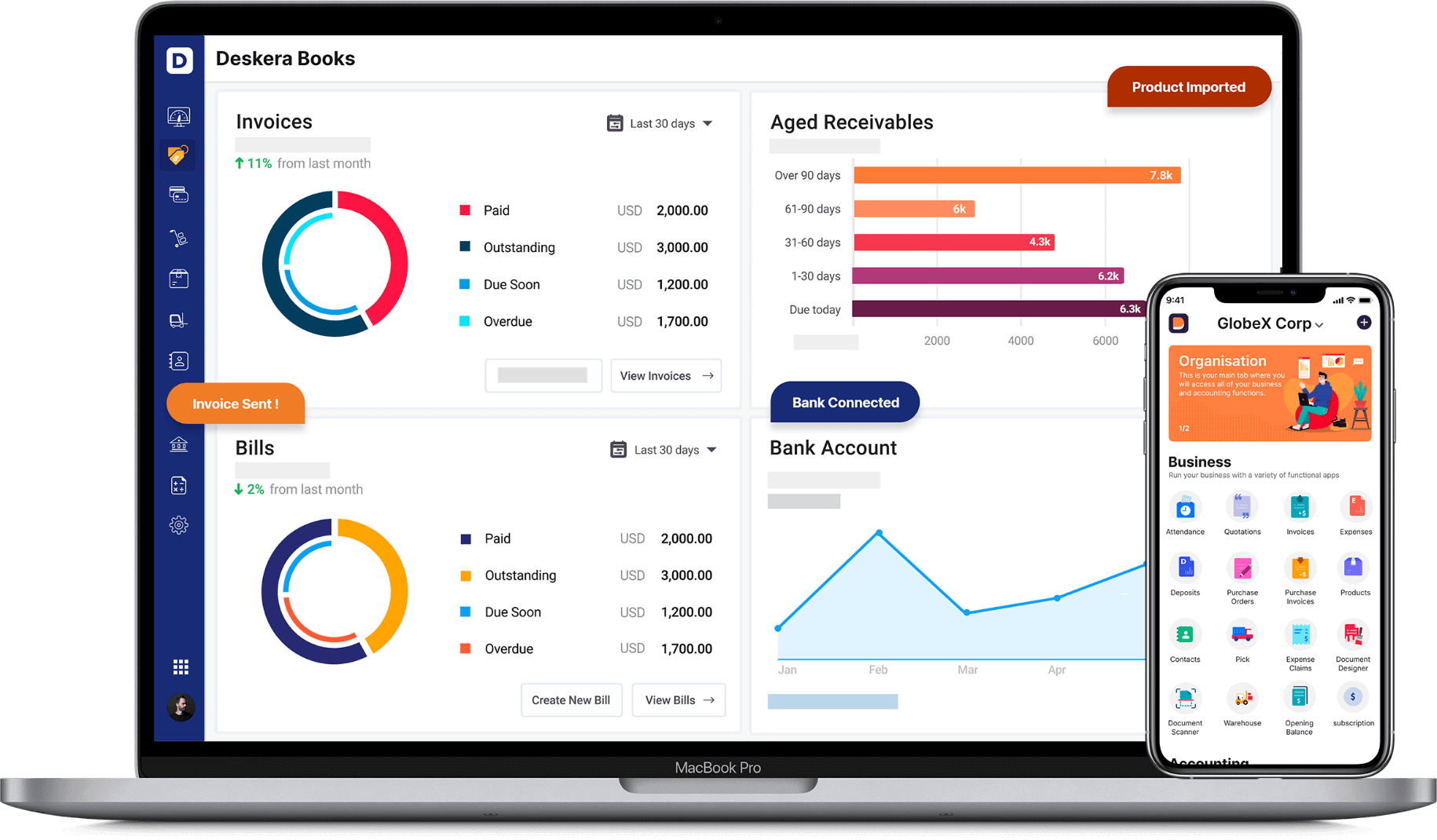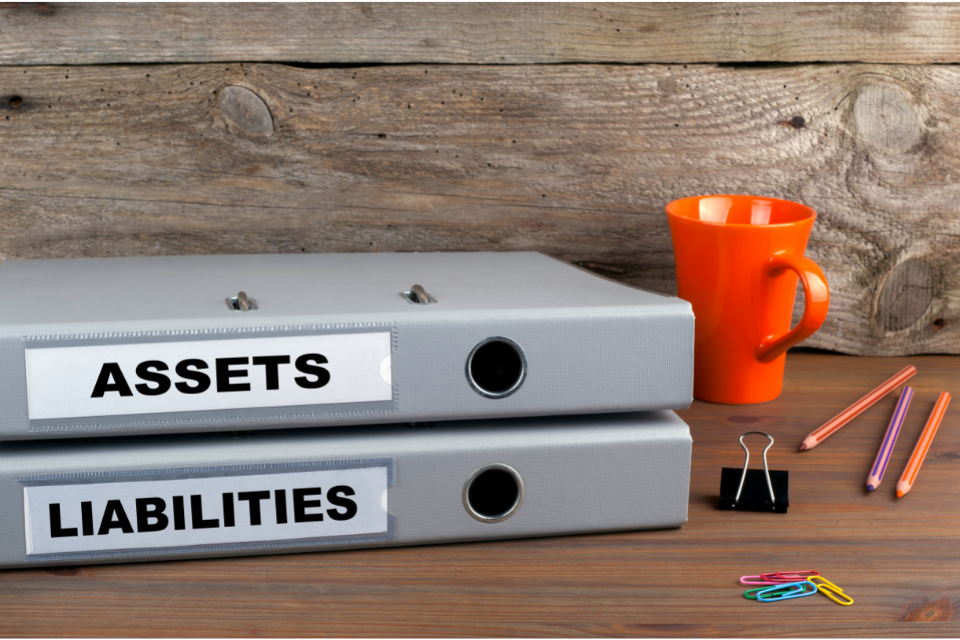What did people do to manage their accounts and finances, before the accounting software came into existence? They actually handled all of their accounting manually. Can you imagine, how hectic it must be? And the frequency of errors?
In the end, accounting software came as a saviour and the double-entry bookkeeping system became the knight in the shining armour for the accountants.
One of the most significant elements of the accounting system is the trial balance. Wondering, why? It allows you to examine all of your business's financial information in one location, help you prepare financial statements, and immediately discover any accounting errors.
We'll go through what this amazing element is, how to construct one, and why it's so vital in accounting in this article. Keep going!
Before we move forward, let us shed some light on the double-entry bookkeeping system.
In a double-entry bookkeeping system, entries are recorded in the debit and credit columns. In the debit column, we enter in the increase in assets (or what you own) and the expenses, while in the credit column, we enter the liabilities (basically, what you owe) and the revenues. Every entry in this system impacts two accounts, and debits must always equal credits.
In this article, we will go into the following details:
- Understanding Trial Balance
- Purpose of a Trial Balance
- Understanding The Adjusted Trial Balance
- Adjusting Entries
- The Need of Preparing an Adjusted Trial Balance
- Uses of an Adjusted Trial Balance
- What Does “Adjusting” a Trial Balance Mean?
- Points to Remember While Creating an Adjusted Trial Balance
- Steps to Create an Adjusted Trial Balance
- Quick Points of Differences Between Trial Balance and an Adjusted Trial Balance
- Key Takeaways
Before we understand the ins and outs of an adjusted trial balance, we should have a general idea about what is a trial balance?
Understanding Trial Balance
According to J.R Batliboi, "A trial balance is a statement, prepared with the debit and credit balances of the ledger accounts to test the arithmetical accuracy of the books."
A trial balance is an accounting statement that aggregates all ledger balances into equal debit and credit account column totals. A trial balance is prepared by a firm on a regular basis, generally at the conclusion of each reporting period. The fundamental goal of a trial balance is to ensure that the entries in a firm's accounting system are mathematically correct.
Purpose of a Trial Balance
The trial balance plays a crucial role in the creation of financial statements. The balance sheet is where the assets and liabilities are recorded. In the profit and loss statement, income and expenses are recorded. The preparation of final accounts is based on all of these accounts.
So, we can say that trial balance is an important part of the double-entry bookkeeping system.
Understanding The Adjusted Trial Balance
An adjusted trial balance is an internal document used by finance teams to record the transactions of each individual account throughout the course of an accounting cycle. Although an adjusted trial balance is not often included in a company's financial statements, accountants use it to keep track of all financial activities in one spot. They also make modifications to the trial balance to ensure that just one accounting cycle's worth of data is included.
An interesting fact is that this approach is used by companies that employ manual accounting to balance their transactions from account to account.
Double-entry accounting can be used to account for adjusted trial balances. Double-entry accounting focuses on tracking the flow of your assets from one account to another, so you know exactly how much money you're producing and how much money you're spending to acquire assets. In double-entry accounting, there are two transactions:
Debit: It is what comes into the account.
Credit: It is what goes out from the account.
In order to keep track of your money, you must record both in the account to which they pertain.
For example, if you have to pay rent on a commercial property, you may record a $2,000 credit in your cash account but a $2000 debit in your property assets account. You may balance your assets against your cash by inputting all transactions in this manner, giving you a more realistic picture of your financial situation.
|
Account
Name |
Debit |
Credit |
|
Cash A/c |
- |
2,000 |
|
Property (Asset) A/c |
2,000 |
- |
There is something called adjusting entries that helps you understand why we need to understand the concept of adjusted trial balance. Let’s check it out.
Adjusting Entries
Under the accrual accounting, revenues are recorded when they are generated, not when they are received, and expenses are recorded when they are incurred, not when they are paid. Adjusting entries are made before the end of each financial year to keep the accounts up to date.
For example, if you owe employees Rs 900 and have yet to pay them, you would deduct Rs 900 from salary expense and credit Rs 900 from salaries payable to represent the expense and liability you owe. If you earned Rs 100 in interest on a bond, you would debit interest receivable for Rs 100 and credit interest revenue for Rs 100 to show the Rs 100 you have coming in, or receivable, and the Rs 100 you have earned.
The Need of Preparing an Adjusted Trial Balance
The adjusted trial balance is prepared to check that the adjusting entries were completed appropriately. This is the final stage before creating financial statements that you, your creditors, and your shareholders will use to assess your company's success. If the financial statements' balances are erroneous, the statements themselves will be incorrect.
Uses of an Adjusted Trial Balance
The adjusted trial balance is an internal report that serves two purposes, though it is not part of the financial statements.
- To double-check that the sum of all debit balances in all accounts matches the sum of all credit balances in all accounts; and
- To be utilised in the preparation of financial statements (specifically, the income statement and balance sheet; preparation of the cash flow statement requires additional information).
As computerised accounting systems automatically create financial statements, the second use of the adjusted trial balance has gone out of favour. If you're manually creating financial statements, it's the source document. The adjusted trial balance is crucial in the latter instance; financial statements cannot be generated without it.
In order to understand the adjusted trial balance, let’s focus on what exactly does it mean to “adjust” a trial balance, for real.
What Does “Adjusting” a Trial Balance Mean?
It's time to make adjusting entries once you've double-checked that you've properly entered your debit and credit entries transactions and that the account totals are right.
Adjusting entries ensure that your financial statements only include information that is relevant to the time period you're looking at.
You may change your trial balance in four ways:
- Deferral: Deferrals are used to get rid of transactions that don't belong in the period for which you're preparing a financial statement (e.g. an advanced payment from a customer).
2. Accruals: Accruals make sure that any future payments and costs (such as rent you owe a landlord but haven't paid yet) are included in the financial documents you're creating now.
3. Missing Transaction Adjustments: They are used to account for transactions that were missed during bookkeeping (e.g. a business purchase on your personal credit card).
4. Tax Adjustments:Depreciation and other tax deductions can be accounted for via tax adjustments.
Let’s understand this with a simple example.
A firm, named ABC paid Rs 2000 in insurance payments in December 2022 which was to be paid in January 2023.
ABC should make the following adjustment entry (a deferral) to ensure that the trial balance only reflects insurance payments that apply to the period ending December 31, 2022 (the period we're focusing on here):
|
Account |
Debit |
Credit |
|
Insurance Payable |
- |
2000 |
|
Insurance Expense |
2000 |
- |
This lowers the insurance payable account by Rs 2,000, raises the insurance cost account by Rs 2,000, and guarantees that the trial balance only includes information on insurance paid until December 31, 2022, and not later.
Your unadjusted trial balance becomes an adjusted trial balance after you apply all of these adjusting items.
Points to Remember While Creating an Adjusted Trial Balance
The sixth phase in the accounting cycle is to prepare an adjusted trial balance. Writing a series of journal entries to account for any half-finished transactions results in an adjusted trial balance.
Payroll expenditures, prepaid expenses, and depreciation expenses are all examples of these costs. The steps for preparing an adjusted trial balance are as follows:
- Run a trial balance without any adjustments. Prior to completing any adjusting entries, this gives you a quick overview of your general ledger accounts.
- Make any necessary adjustments to the data. Adjustments for prepayments, interest and depreciation expenditure, and salary accruals are all examples of adjusting entries.
- Run the trial balance with the adjustments. By comparing the initial trial balance totals with the updated trial balance totals, you can check that the entries have been posted appropriately.
Objective to Create an Adjusted Trial Balance
An adjusted trial balance sheet is used to keep track of your company's activities during a single accounting period. You may accomplish this by taking your account balances and removing information about transactions that occurred outside of the accounting period. When you make these revisions to your trial balance sheet, you'll have a more accurate picture of your financial activities, which you may use to generate your formal financial statements.
To balance their accounts and prepare financial statements, many individuals utilise the software. Based on your accounting cycle, the software may produce your trial balance and make modifications. If you have a larger company, accounting software may be a good investment to help you enhance the accuracy and efficiency of your bookkeeping.
Steps to Create an Adjusted Trial Balance
Step 1: Keep Track of All Transactions.
Before you balance your accounts, ensure sure you have a record of any money or asset transactions that enter and exit your accounts. Having a record of the proper transactions might make it much easier to fix your trial balance sheet. All transactions should be recorded as credits and debits when utilising the double-entry accounting system. If there is a disagreement between the two, you can go to your transaction record to remedy the errors.
The record of these transactions is sometimes referred to as "journal entries" in accounting software. You can insert these journal entries into your ledgers if you are manually maintaining your accounting records. You may input them straight into the general ledger, which is a full database that your accounting software utilises to record and balance your transactions if you're using accounting software.
Step 2: Run an Unadjusted Trial Balance
An unadjusted trial balance is a preliminary overview of your account balances that helps you understand what debits and credits your accounts have. This data provides the foundation for your financial statements, but it does not break down transactions by accounting cycle.
You can add the balances of all your debits for each account to complete your unadjusted trial balance. Then, for each account, add all of your credits separately. You should have a balanced financial account if your debits and credits are equal. For instance, if you spend $3,000 on credit, you should have $3,000 in assets. If your accounts don't balance, search for areas where you may have only logged an entry once and make the necessary corrections.
Step 3: Make Any Necessary Changes to the Balance
You can make the changes once you've finished your unadjusted trial balance. All transactions that don't occur within the accounting cycle for which you're generating statements are removed using these adjustments. By making these modifications, you may enhance the accuracy of the financial statements you generate from your balance sheet by defining the transactions that are required for a certain period.
A trial balance sheet can be adjusted in four different ways which we have seen in the previous sections.
Step 4: Run the Adjusted Trial Balance
Your balance should only represent transactions that occurred within the accounting cycle for which you're producing statements when you make the changes. To determine your total credits, combine the credits from each account together one more. Then sum up your debits by adding your debits from each account. The two totals should equal, just like the unadjusted trial balance. You may confirm that you re-entered each modification appropriately by performing these calculations. If your totals don't match, go back through your adjustments and rectify any changes you only entered once.
Step 5: Submit Your Closing Entries
Closing entries are journal entries that you enter in your ledger at the start of a new accounting cycle to reset your temporary accounts to zero. This is significant since it allows you to categorise your transactions by period, which aids in calculating your net income for a certain time period. It also aids in the organisation of your books by time. Here are a few instances of temporary accounts that can be zeroed out before the following accounting cycle begins:
Enter transactions that zero out the sums in these temporary accounts and shift the funds into permanent accounts to post-closure entries. Temporary accounts are those that only hold funds for a single accounting period, whereas permanent accounts are those that hold cash for several accounting periods. By keeping cash flow distinct from retained earnings until your accounts are balanced, you can measure how much money your firm produces in a single accounting quarter.
If you work for a company, you may be allowed to deposit the funds into a retained profits account, which is a permanent account that holds money that your company hasn't spent in past accounting cycles. If your company is owned by one or two people, known as principal proprietors, you may choose to move the funds to the capital account, which is a permanent account that monitors the money the owners put into the company and the money they keep. If you use accounting software, it may automatically submit these closing items at the conclusion of your accounting cycle.
Quick Points of Differences Between Trial Balance and an Adjusted Trial Balance
- The trial balance is prepared initially, followed by the amended trial balance. Adjusted trial balance includes accumulated expenditure, accrued income, prepayment, and depreciation, whereas trial balance removes these.
- A trial balance is a list of ledger account closing balances at a specific point in time. Adjusted balance, on the other hand, is a list of general accounts and their current balances after the adjusting entries have been posted.
How can Deskera Help You?
Deskera Books can help you automate and mitigate your business risks. Creating invoices becomes easier with Deskera, which automates a lot of other procedures, reducing your team's administrative workload.
Sign up now to avail more advantages from Deskera.

Learn about the exceptional and all-in-one software here:
Key Takeaways
- In a double-entry bookkeeping system, entries are recorded in the debit and credit columns.
- In the debit column, we enter in the increase in assets (or what you own) and the expenses, while in the credit column, we enter the liabilities (basically, what you owe) and the revenues.
- Every entry in this system impacts two accounts, and debits must always equal credits.
- A trial balance is a statement, prepared with the debit and credit balances of the ledger accounts to test the arithmetical accuracy of the books
- An adjusted trial balance is an internal document used by finance teams to record the transactions of each individual account throughout the course of an accounting cycle.
- Debit: It is what comes into the account Credit: It is what goes out from the account
Related Articles











